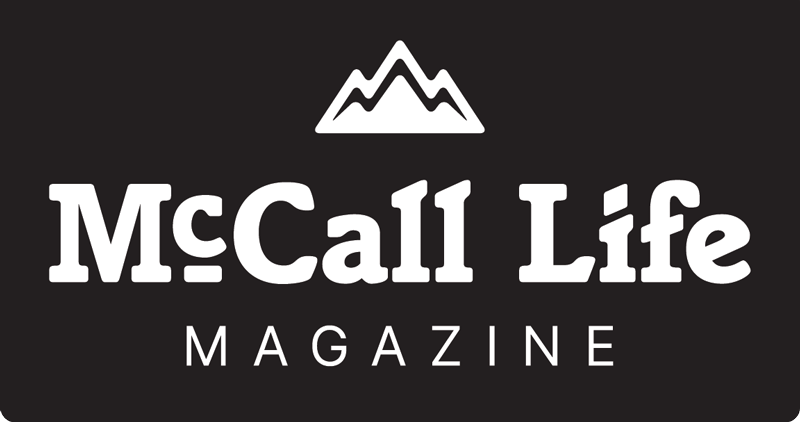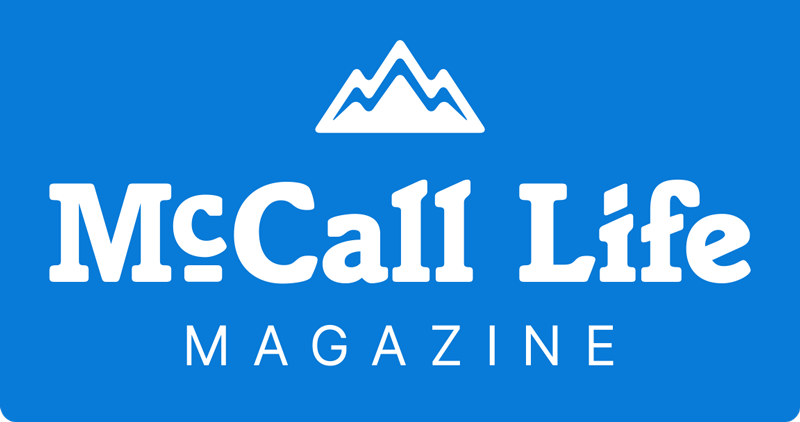The Payette Land Trust works with community volunteers, local landowners, and other organizations to conserve the pristine beauty of Central Idaho
By Kailan Manandic
There will always be differences within communities. Snowboarders and skiers navigate the slopes in different ways, bikers and boaters have different ideas of the perfect autumn day, and farmers and real-estate developers may disagree on how to best manage a property.
Regardless of those differences, a place like McCall tends to attract people with more in common than they might think. The same natural splendor that captivates long-time residents and newcomers alike is what binds the community together.
Ask anyone off the street and they’ll likely agree that the conservation of Payette Lake is vital to the town’s identity.
“It's that idea of wanting to conserve the reason you came here,” says Craig Utter, executive director of the Payette Land Trust. “There's a reason everybody wants to come to McCall—it’s beautiful. You get up into the mountains or you go out on the river and float down and get out of your tube; you just assume all of that land around the lake is always gonna be there, and it doesn’t become an issue until they see a piece of land disappear or the community educates them.”
The Payette Land Trust (PLT) is a non-profit organization that aims to protect natural habitats, farmland, and private property in West Central Idaho. The organization's mission is to preserve the natural beauty of the land, protect its agricultural heritage, and ensure that future generations can enjoy the outdoors in perpetuity.
Over the years, the PLT has become a vital part of the community, with its efforts leading to significant conservation gains and improved recreational opportunities for residents and visitors alike.
Despite their best efforts, PLT is just one organization with a volunteer board and two employees working to balance out the pressure for economic development from the tourism, real estate, and recreation industries.
“I think we're about 25 years behind the eight ball,” Utter says. “But that's how conservation works, you think back and go, ‘man, I wish I would've conserved that piece of ground 25 years ago because it's hard to do it now.’”
Luckily, there is a growing resilience within the residents of the region to cast aside the consumption mindset in favor of conservationism. The land is what brought them here, and the land is what binds them together.
PLT is a small example of this statewide effort to balance development and conservation—it and other land trusts work with private landowners to ensure their property remains pristine and is only used as approved by the agreed-upon conservation easement. The community has additionally lent a hand through donations to acquire easements that the owners could not donate.
“[Economic development] is Sisyphus pushing the boulder up the hill again—it used to roll back on us, but now we got to the top and it rolled over the other side,” Utter says. “Development is coming, economic development has worked, we sold Idaho and said, ‘come to Idaho, it's a great place.’ Well, people are coming and they're coming faster than we might want. We opened Pandora's box, and the question is then, how do you take responsibility for that? The land trust is one part of it.”


Eased Into It
Almost 30 years ago, the inspiration for the Payette Land Trust arose with a collaboration between a local attorney and a retired physician who had a passion to protect the uniqueness of Central Idaho. Dr. Phyllis Huffman recognized these cherished landscapes were at risk and wanted to protect the unique agricultural character, the vibrant wildlife populations, and the incredible scenic beauty of Long Valley. That discussion evolved into the formation of PLT in late 1993.
The PLT has since acquired land and easements throughout Idaho, Valley, Washington, and Adams counties. While the trust is always happy to accept direct donations of land, it lacks the resources to properly maintain large acreages. So, one of the key tools the PLT uses is conservation easements with private landowners.
“It's a double-edged sword,” Utter says. “To do the work that we do, it takes a long time to conserve a piece of property. It's the same thing as a power-line easement or a road easement. It's saying that this land is gonna be used in a certain way. That sounds really easy, but there's a lot to it because we're doing it in perpetuity—you are making a decision about this piece of property forever.”
Conservation easements are an exchange of development rights—landowners sign over these rights to the PLT which then ensures the land is preserved for its purpose as detailed in the agreement.
“Our job is to come in and see if we can find those specific pieces of property that we see has value, the landowner sees has value, and the community sees as valuable,” Utter says. “We’re trying to keep those as open space.”
Specifically, these are legal agreements that limit the development of a property while still allowing the owner to retain ownership. By using conservation easements, the organization can ensure that important habitats and working farms remain protected, while still allowing landowners to use and enjoy their property.
“Our main focus is to balance conservation and development. Development is coming; that needs no help. If you look at the number of real-estate developers, real-estate agents, construction workers, people who need houses—everybody needs a job and a house—there's a whole wave of that,” Utter says. “Then we've got our organization with now two employees who are trying to find that balance.”
Many of these easements take upwards of two years to solidify, partially because the agreement is perpetually binding. If the owner sells the property to someone else, or their children inherit it, or they simply change their mind, the PLT maintains the development rights and will preserve the land as specified in the easement.
“It's not like adopting a puppy or kitten at MCPAWS,” Utter says with a laugh.
While owners can donate development rights as part of conservation easements—earning a tax deduction—they can also opt to sell the rights to the PLT at a discount.
“If you need some funding for it, you might bargain sale it, which means the easement, your value of that development right, is worth a certain amount,” Utter says. “The owner might ask for half of that, and we have to decide if we can go raise the funding. So, the donations follow that—the support follows your success in conserving property, and these are really long-term, slow, but very important projects.”
Community partnerships and grass-roots support is the reason the PLT can do so much conservation work. The trust has conserved 16 properties spanning nearly 3,000 acres which can all be found at payettelandtrust.org/what-we-do/our-properties.
The PLT has also partnered with several land trust coalitions and is the adopted land trust of local author CMarie Fuhrman as part of the Writing the Land collaborative outreach program.

Big Hearts
It could be for environmentalism, it could be to protect a view of Jughandle Mountain, or it could be to preserve farmland for future generations, whatever the reason, many Idahoans have united around the issue of conservation. The PLT and the support behind it are indicative of this effort.
“I do think we're having more conversations about how lucky we are and how important it is that we can conserve what we have,” Utter says. “The question is, will we cross enough boundaries between ideological and political viewpoints to say it's okay to conserve what we have— to, no matter who I am, say I want to be a conservationist in whatever form I can be. It hasn't always been that way, those terms can be politically dividing, but the realism is if you start wrapping your head around it, we've got so much in common up here.”
After its most recent easement success with the conservation easement attached to Cougar Island on Payette Lake, the PLT has seen a lull in development.
“We are now in the moment of having come off of the second most memorable push for development, so, some of the pressure is coming off. But resort towns never crash like industrial places,” Utter says. “This is the ironic part, we're all talking about trying to fix the internet problem so we can all work from here. What happens when you do that? It's more accessible. More access means more people. So, the question is then, as we're driving down the road, where are those vector changes that are going to take us in a different direction?”
Recently, the PLT has begun to focus more on education and outreach. Over the summer, the trust has hosted numerous events to bring awareness to conservation issues and educate the public on their mission. The organization has partnered with local artists to create the PLT Big Heart, a painted sculpture that has been displayed at various business and public locations around McCall over the past few years.
“And that's the great thing about the land trust is that it can be a unifying factor no matter where you sit on a political spectrum or a land use spectrum,” Utter says. “It’s all interconnected, we're all sitting on the same bus, and we're saying we don't want to do this, but we're driving down the same road towards the same cliff that Colorado dropped off, that California dropped off, but we're 20 years behind, and all it takes is a small vector change.”




